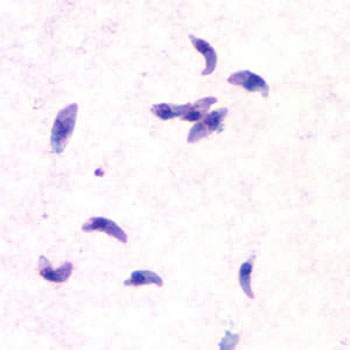Modified Version of CRISPR/Cas9 Identifies Parasite Infectivity Genes
By LabMedica International staff writers
Posted on 13 Sep 2016
A modified version of the CRISPR/Cas9 gene editing system was used to map the genome of the apicomplexan parasite Toxoplasma gondii, which, in addition to revealing which genes were necessary for this pathogen's survival, gave insights into genes necessary for infection by the malaria parasite Plasmodium falciparum.Posted on 13 Sep 2016
CRISPRs (clustered regularly interspaced short palindromic repeats) are segments of prokaryotic DNA containing short repetitions of base sequences. Each repetition is followed by short segments of "spacer DNA" from previous exposures to a bacterial virus or plasmid. CRISPRs are found in approximately 40% of sequenced bacteria genomes and 90% of sequenced archaea. CRISPRs are often associated with cas genes that code for proteins related to CRISPRs. Since 2013, the CRISPR/Cas system has been used in research for gene editing (adding, disrupting, or changing the sequence of specific genes) and gene regulation. By delivering the Cas9 enzyme and appropriate guide RNAs (sgRNAs) into a cell, the organism's genome can be cut at any desired location. The conventional CRISPR/Cas9 system is composed of two parts: the Cas9 enzyme, which cleaves the DNA molecule and specific RNA guides that shepherd the Cas9 protein to the target gene on a DNA strand.

Image: A photomicrograph of Toxoplasma gondii tachyzoites, stained with Giemsa (Photo courtesy of the CDC).
In the current study, investigators at the Whitehead Institute (Cambridge, MA, USA) modified CRISPR/Cas9 to reduce the overall damage caused to the T. gondii genome while increasing the precision of its gene targeting. This approach allowed them to assess the contribution of each of T. gondii’s 8,158 genes and study their individual functions during infection of human fibroblasts.
Results published in the September 1, 2016, online edition of the journal Cell revealed approximate 200 genes common to all apicomplexans that contributed to the parasites’ ability to infect human cells. The investigators were particularly interested in a gene called claudin-like apicomplexan microneme protein (CLAMP), which encoded an invasion factor that resembled mammalian tight-junction proteins and localized to secretory organelles, making it critical to the initiation of infection. They reported that CLAMP was present throughout sequenced apicomplexan genomes and was essential during the asexual stages of the malaria parasite Plasmodium falciparum.
“There has never been a really good way of looking at the function of all genes in any apicomplexan parasite,” said senior author Dr. Sebastian Lourido a fellow of the Whitehead Institute. “We have introduced a method to assess the function of the entire genome. This technology can be used to study a variety of topics, from nutrient acquisition and responses to immune pressures to epistasis and genetic interactions. This is an important leap forward in what is possible to investigate in these parasites.”
Related Links:
Whitehead Institute













